Natural Resources Research & Management
Natural Resources Research & Management
To support and inform natural resource conservation and restoration by excelling as a trusted source of science and management information.

Research programs at the Jones Center focus on understanding the ecology, restoration and management of the longleaf pine ecosystem; and the water resources, wetlands and aquatic ecosystems of the southeastern Coastal Plain. Ichauway is located in the heart of the historic range of longleaf pine. Longleaf pine ecosystems are among the rarest and most biologically diverse in North America and are increasingly a focus of conservation efforts. Southwest Georgia is also a hydrologically unique karst region that serves as the major recharge area for one of the nation’s most prolific and heavily used aquifers, the Upper Floridan aquifer. We balance basic research of these systems with applied work of relevance to the natural resource management and conservation communities and see the Center as a crossroads for research and practice.The Center’s research is integrated under three programmatic areas: Woods, Water, and Wildlife.
Information from our research and conservation programs is shared and promoted through our education and outreach programs. The Center’s priority outreach constituents are practicing professionals who are making decisions that influence the management and conservation of natural resources, and scientists who are providing the data to inform these decisions. We also focus outreach on natural resource management agencies, policymakers, private landowners, conservation organizations, and university classes through field tours, short courses, and workshops. We also educate university students in natural resource degree programs to help prepare the next generation for future decisions and challenges. Approximately 125 students have completed advanced degrees through our cooperative graduate education program, and we continue to have many graduate students pursuing degrees at any given time.
Research programs at the Jones Center focus on understanding the ecology, restoration and management of the longleaf pine ecosystem; and the water resources, wetlands and aquatic ecosystems of the southeastern Coastal Plain. Ichauway is located in the heart of the historic range of longleaf pine. Longleaf pine ecosystems are among the rarest and most biologically diverse in North America and are increasingly a focus of conservation efforts. Southwest Georgia is also a hydrologically unique karst region that serves as the major recharge area for one of the nation’s most prolific and heavily used aquifers, the Upper Floridan aquifer. We balance basic research of these systems with applied work of relevance to the natural resource management and conservation communities and see the Center as a crossroads for research and practice.The Center’s research is integrated under three programmatic areas: Woods, Water, and Wildlife.
Information from our research and conservation programs is shared and promoted through our education and outreach programs. The Center’s priority outreach constituents are practicing professionals who are making decisions that influence the management and conservation of natural resources, and scientists who are providing the data to inform these decisions. We also focus outreach on natural resource management agencies, policymakers, private landowners, conservation organizations, and university classes through field tours, short courses, and workshops. We also educate university students in natural resource degree programs to help prepare the next generation for future decisions and challenges. Approximately 125 students have completed advanced degrees through our cooperative graduate education program, and we continue to have many graduate students pursuing degrees at any given time.
The Jones Center is located on Ichauway, a 29,000 acre property in rural southwestern Georgia. Ichauway was established as a quail hunting reserve in the 1920s by Robert W. Woodruff, who became the long-term chairman of The Coca-Cola Company
An avid outdoorsman, Woodruff recognized the unique natural characteristics of the land and maintained one of the most extensive tracts of longleaf pine and wiregrass in the United States for quail hunting. After Woodruff’s death in 1985, the Robert W. Woodruff Foundation undertook an exhaustive process of research and advisement for the future of the property and ultimately established the Joseph W. Jones Ecological Research Center at Ichauway in 1991. The Robert W. Woodruff Foundation provides the core financial support for the Jones Center programs and facilities.
The Jones Center was named in honor of Joseph W. Jones, former senior vice-president of The Coca-Cola Company, Woodruff’s longtime associate, and former chairman of the Woodruff Foundation. By 1993, core staff members were hired in research, forest and wildlife management, and administrative support, and a newly constructed campus was completed in 1996. There are now approximately 85 employees at the Center. Over 100 graduate students from regional universities have completed thesis research with on-site advisors.
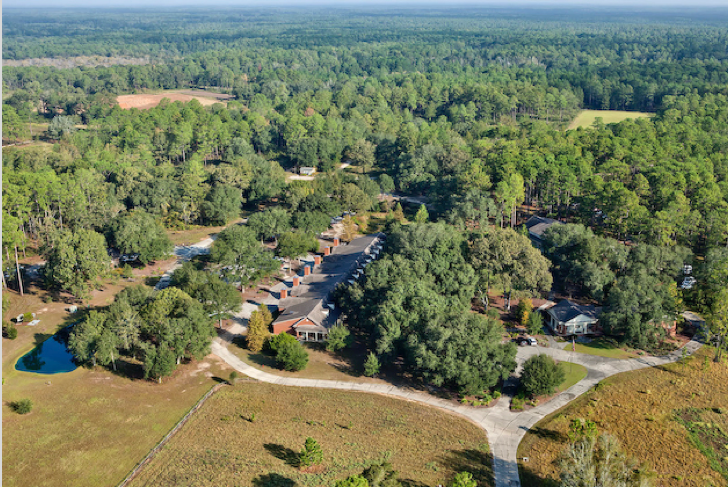
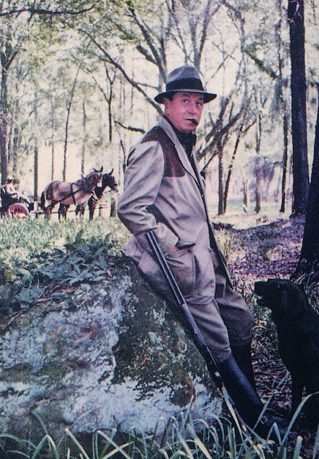
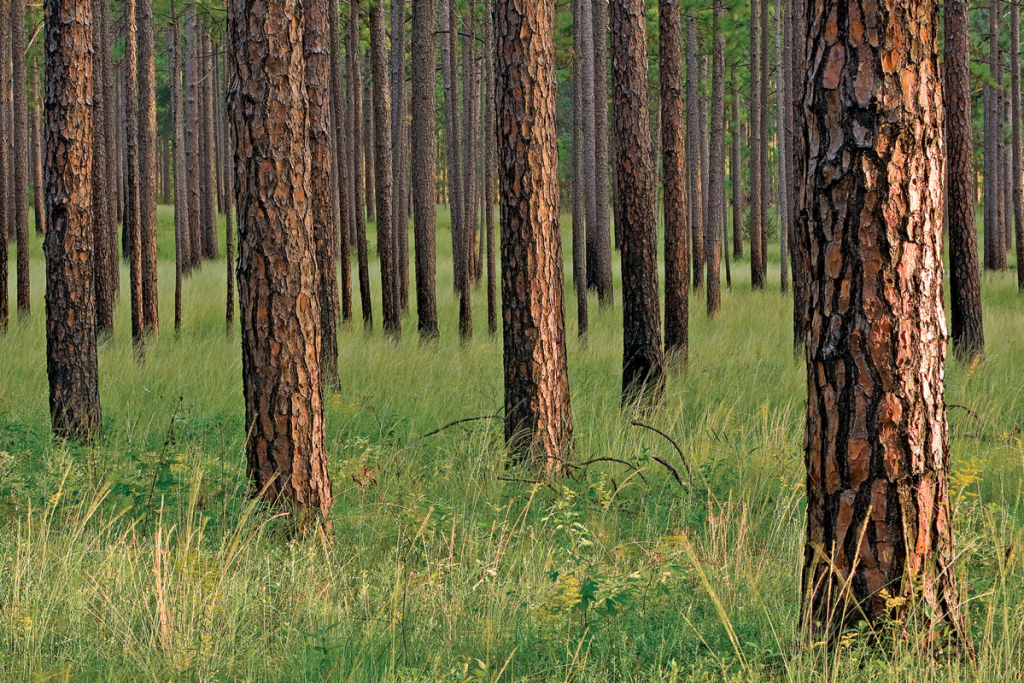
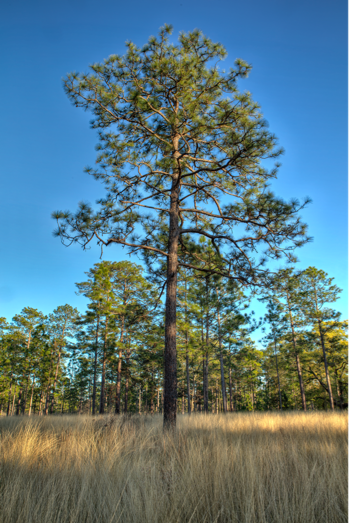


Our administrative and education buildings provide offices and meeting spaces for scientists and managers at the Center, including recently updated auditorium and breakout facilities.
An 18,000 square foot research laboratory houses
Newly constructed guest lodging provides accommodations for visiting university classes, professional groups, and research collaborators. These facilities also include the Crossroads, a new dining facility to serve visitors to the Center.
Our student village houses graduate students and research technicians in new modern facilities that include private bedrooms and bathrooms with shared living space.
The Center’s Information Technology (IT) department includes trained network, Geographic Information System, and database professionals. Our state-of-the-art IT services effectively link our remote location to the broader community of academic institutions and scientific collaborators.
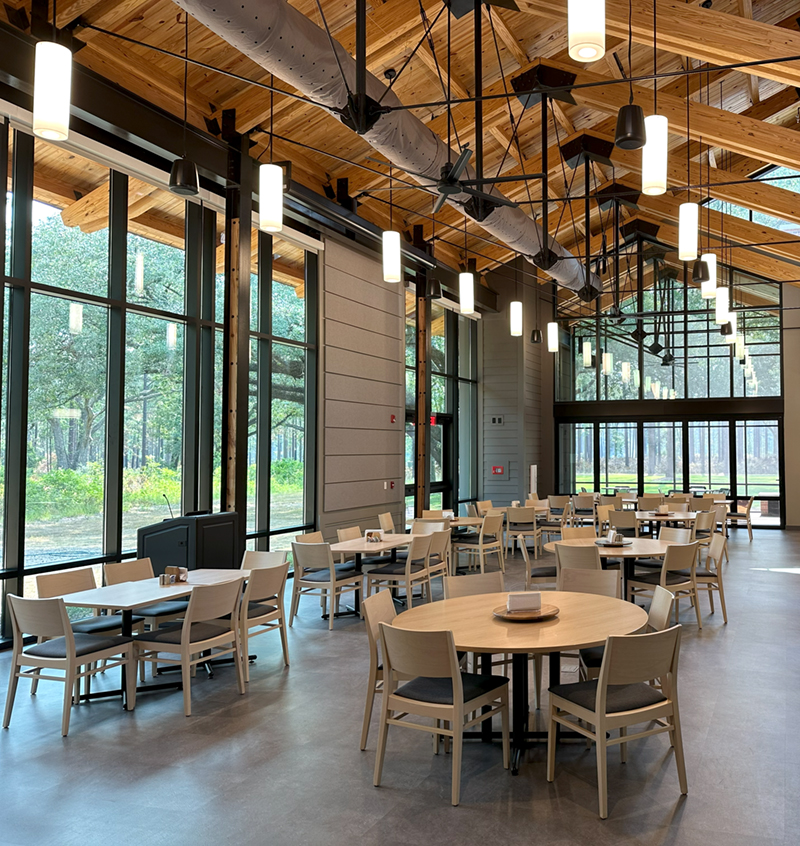
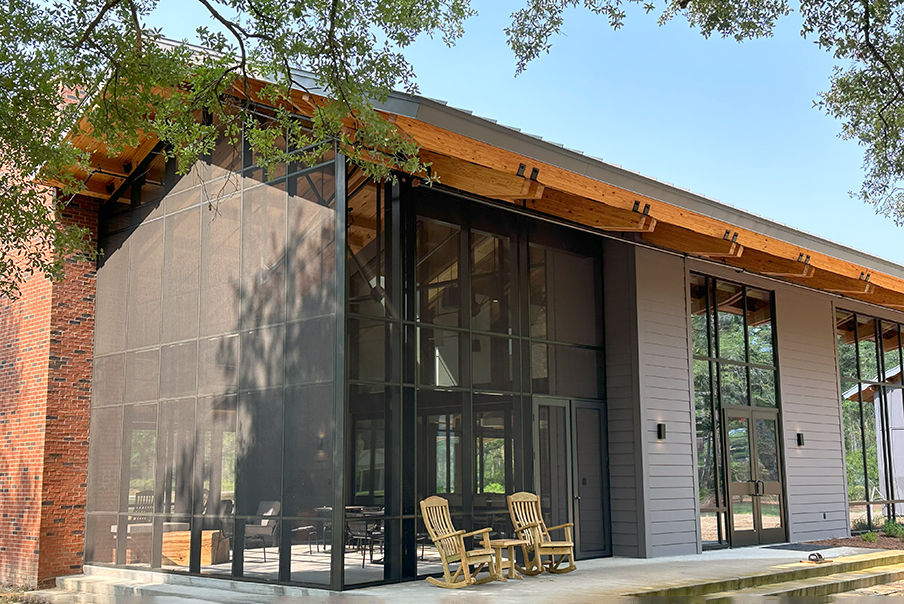
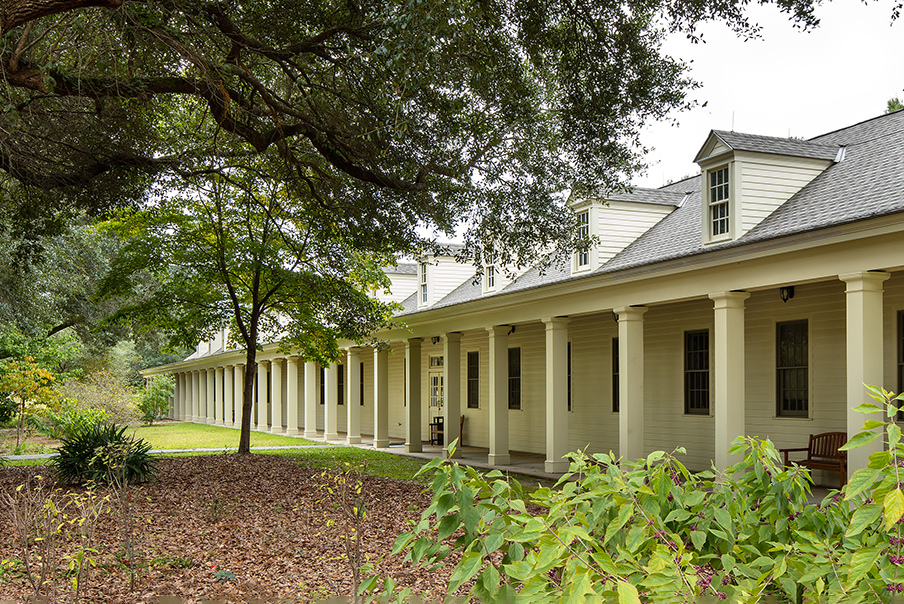
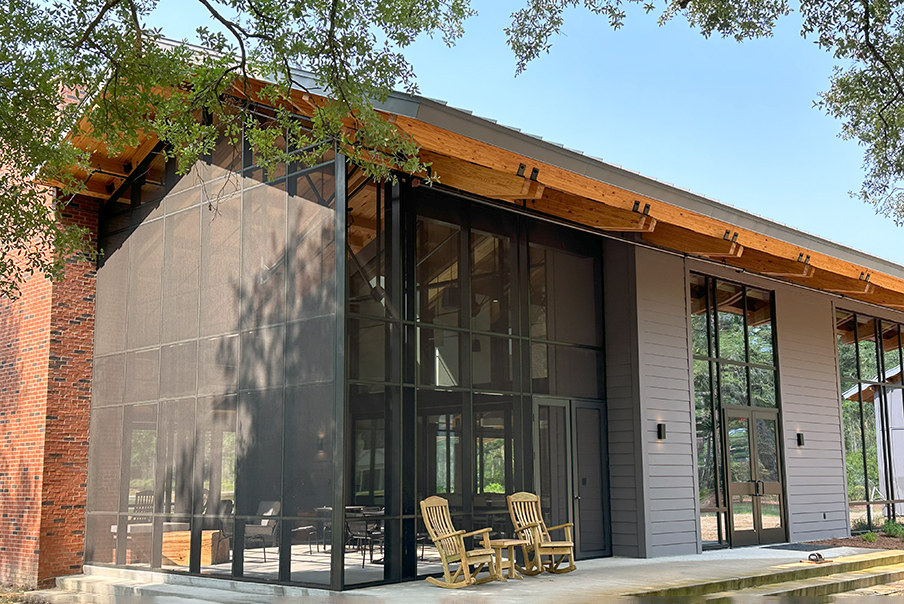
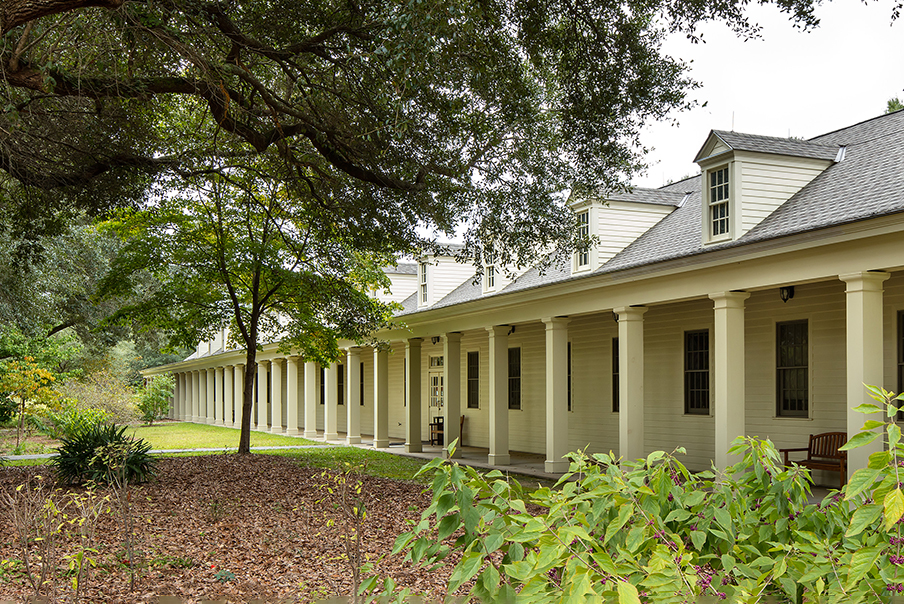
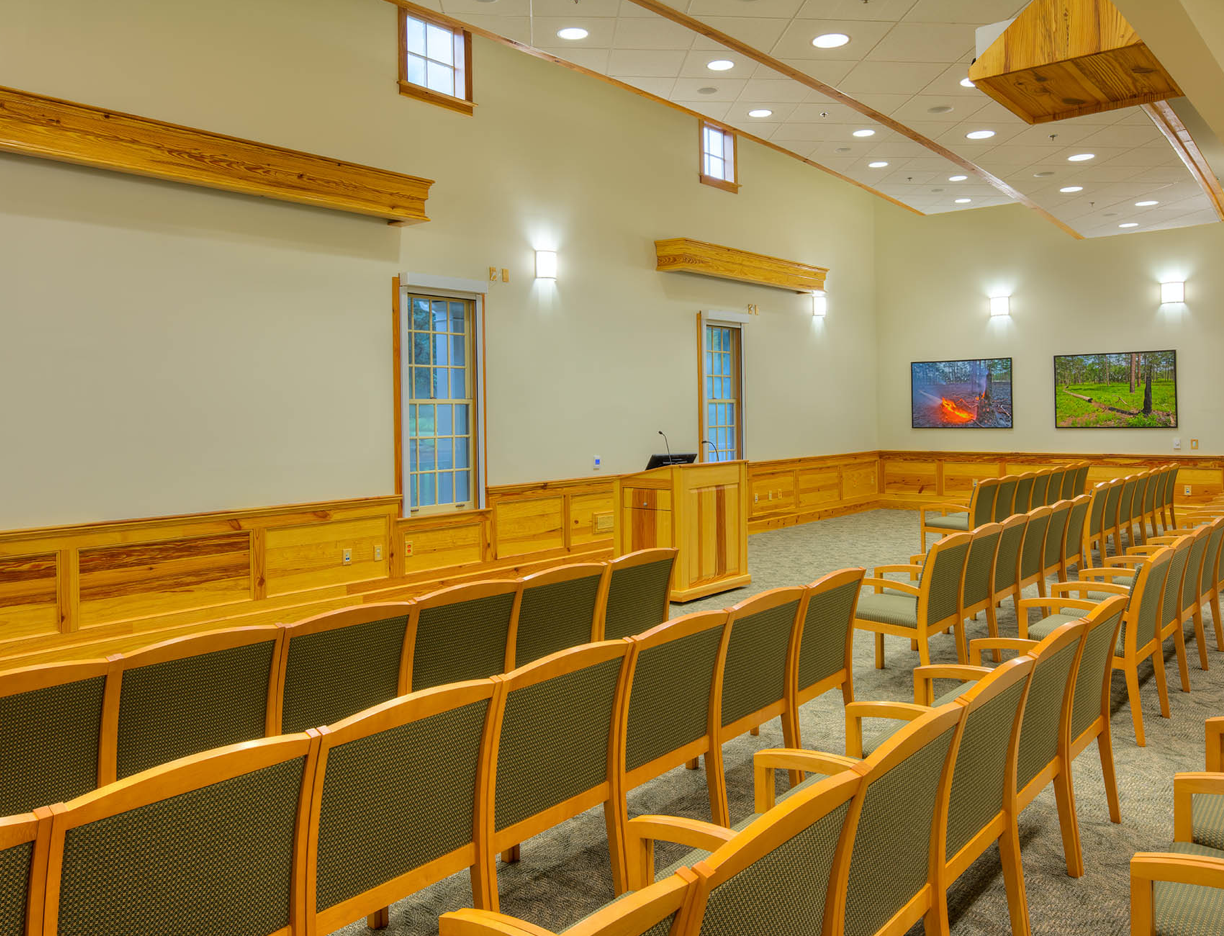
Ichauway is located on the Dougherty Plain, a karst topography with local relief ranging from 90 to 200 ft MSL, and is dominated by sandy soils with drainage classes ranging from excessively drained sands to very poorly drained clays. The property contains approximately 18,000+ acres of upland pine grassland habitats with the remainder consisting of agricultural fields, wetlands, and riparian hardwood hammocks. Virgin longleaf forests on Ichauway were harvested in the early 20th century, with today’s second generation longleaf stands dominated by 80-100 year-old trees. The longleaf forests found on Ichauway today demonstrate the results of over 80 years of ecologically-sound management with frequent prescribed fire and single tree selection silviculture. Upland pine habitats at Ichauway are dominated by longleaf pine and either a wiregrass (native ground cover) or broom sedge (old field) understory. Basal area ranges from 40-60 sq. ft./acre with most stands characterized by mature, widely spaced pines.
The fire-maintained longleaf pine ecosystem is a remnant of the forest type that once dominated the southeastern Coastal Plain and is perhaps the most significant ecological attribute of Ichauway. Much of the ground cover of the 18,000 acres of this forest at Ichauway has not been disturbed by previous agricultural tillage and consequently harbors some of the most species-rich habitats in North America. More than 1,100 vascular plant species have been documented on Ichauway. The ground cover under longleaf pines is extremely diverse with more than 50 different species sometimes found in an area of approximately a square yard. The characteristic vegetative structure and composition of well-managed longleaf forests support a unique faunal community that provides habitat for many species of conservation concern. Over 370 vertebrate species have been documented on Ichauway, and herpetofauna represent many of the most threatened species of the longleaf pine ecosystem.
Just over 15 miles of Ichawaynochaway Creek flow through Ichauway, and the Flint River forms 13 miles of the property’s eastern boundary. Aquatic and wetland habitats range from cypress-gum ponds and grassy, ephemeral wetlands to riverine habitats including cypress sloughs, deep pools, gravel riffles, and large stone, rapid water shoals. Diverse hardwood forests, called hammocks, are found on alluvial soils adjacent to the river and the creek. The aquatic habitats and their adjacent uplands are critical habitats for many rare species of plants, amphibians, reptiles, and birds. The limestone geology of Ichauway and the associated riverine habitats are unusual in the southeastern Coastal Plain because the stream channels are rocky with many shoals and significant amounts of groundwater input as seepage from fissures in bedrock.
The ecological communities found across Ichauway provide a unique example of the historic landscape of the southeastern Coastal Plain. These relatively undisturbed natural communities offer valuable insight and opportunities for research that helps better understand the structure, function, and value of these ecosystems.
The Jones Center is funded and supported by the Robert W. Woodruff Foundation. Ichauway itself is owned by the Foundation and is managed and utilized by the Jones Center for conservation, research, and education programs.
The Robert W. Woodruff Foundation was established in 1937 (originally as the Trebor Foundation) by Robert Winship Woodruff, long time leader of The Coca-Cola Company and an avid outdoors man. After Mr. Woodruff’s death in 1985, Ichauway became the property of the Woodruff Foundation. Mr. Woodruff originally assembled Ichauway as a quail hunting reserve, and he spent as much time there as possible. His many trips to Ichauway were necessary, he said, “to readjust my sense of values.”
In his will, Mr. Woodruff expressed the wish that Ichauway be maintained as a natural preserve. After seeking counsel from scientists and naturalists, the Foundation’s trustees established the Joseph W. Jones Ecological Research Center in 1991.
The Robert W. Woodruff Foundation is an independent, non-profit, private foundation devoted to improving the quality of life in Georgia. The Foundation makes grants to qualified non-profit organizations in six broad program areas: health, education, environment, human services, arts and culture, and community development.
The Foundation is responsive to the needs of the community, participating with the community in supporting initiatives led by others.
Full information about the Foundation grant program and administrative operations is available through the Foundation website.
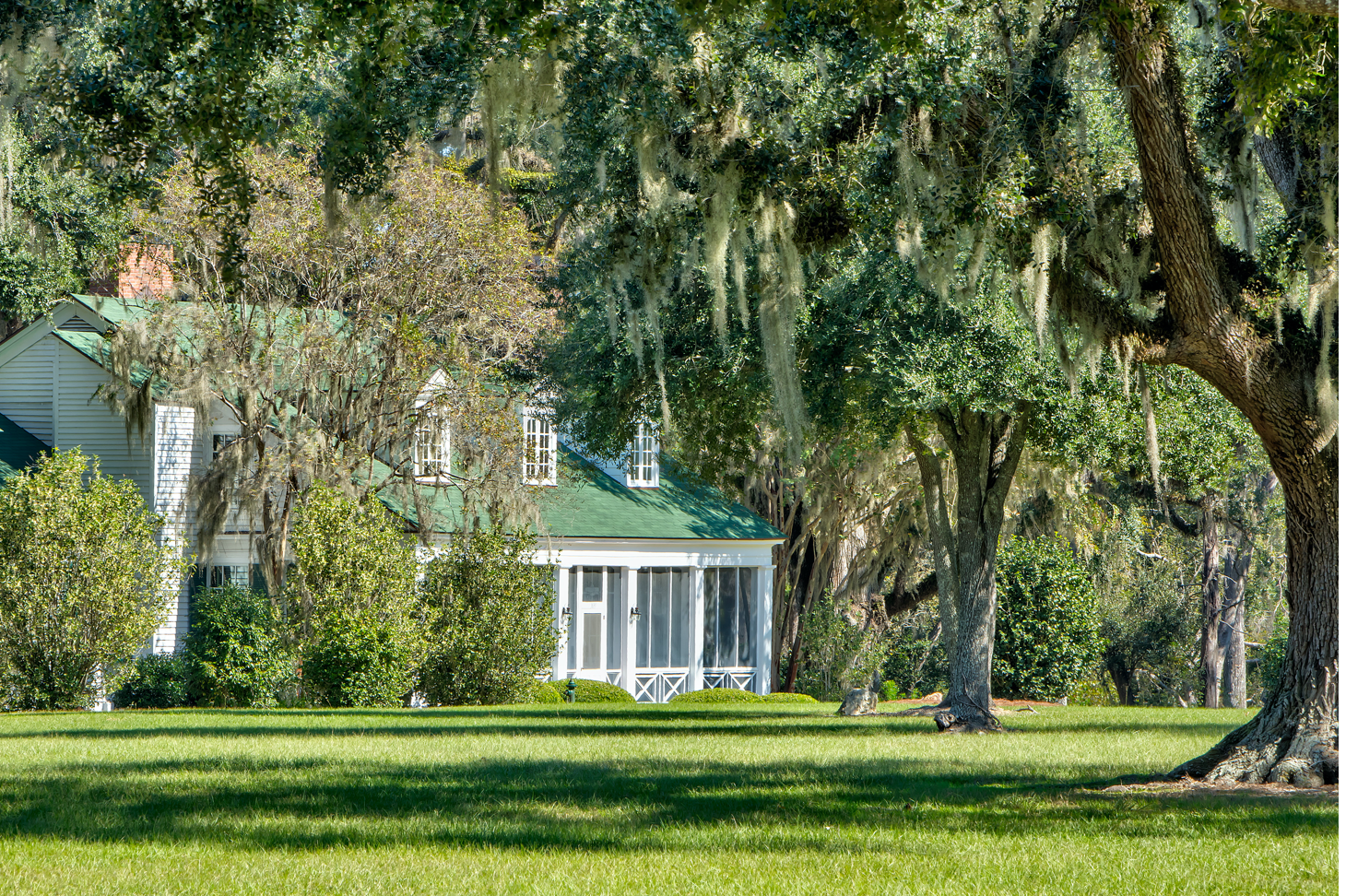
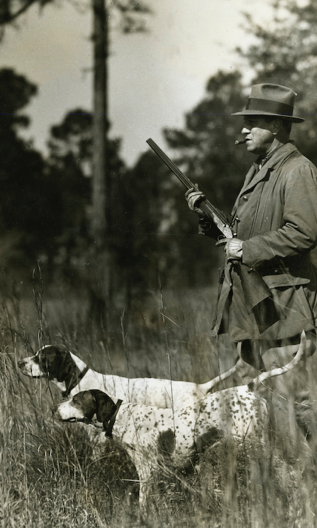
The Jones Center is distinct in the community of ecosystem research organizations. We are built on a strong foundation established by Robert W. Woodruff, who committed to conserving this land and improving the lives of those within Ichauway and surrounding communities. His foresight, followed by the vision and dedication of the Robert W. Woodruff Foundation, led to the establishment of a world-class research and conservation institution at Ichauway. Over the last 27 years, the Jones Center has earned a distinguished reputation and has grown its impact on the scientific understanding and management of natural resources in the southeastern U.S.
Our strategic plan is a vision for the future. We feel a deep responsibility to continue our tradition of excellence, and our commitment to stewardship of the land, water, and wildlife will not waiver. We acknowledge that our foundation and ethic are firmly rooted in both the land and the experiences of those who preceded us. We recognize the need to anticipate future challenges in our unique role as crossroads between researchers that acquire knowledge and enhance understanding, and managers that demonstrate and practice natural resource management and conservation. The core of our ethics is to apply this philosophy to future conservation and land management challenges.
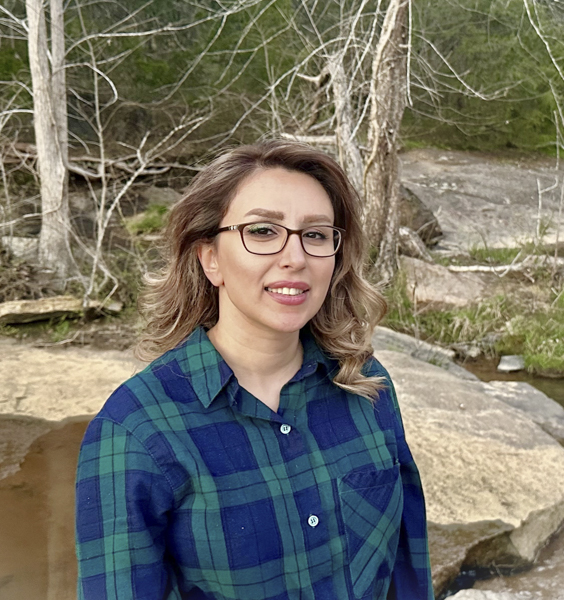
Postdoctoral Research Associate, Landscape Ecology
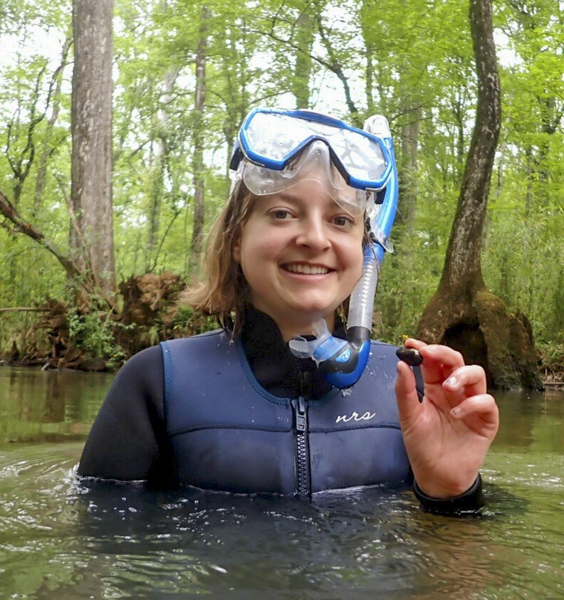
Affiliate Research Technician, Mussel Conservation

Ph.D. Student, Ecohydrology
Auburn University
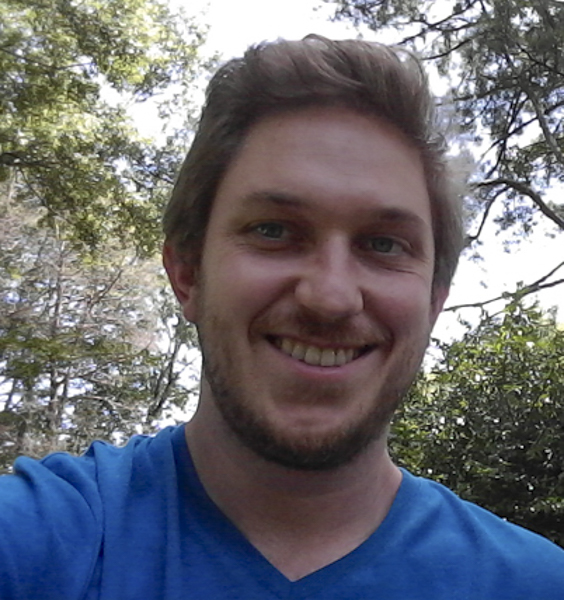
Ph.D. Student, Entomology & Microbiology
University of Georgia

Ph.D. Student, Entomology & Microbiology
University of Georgia
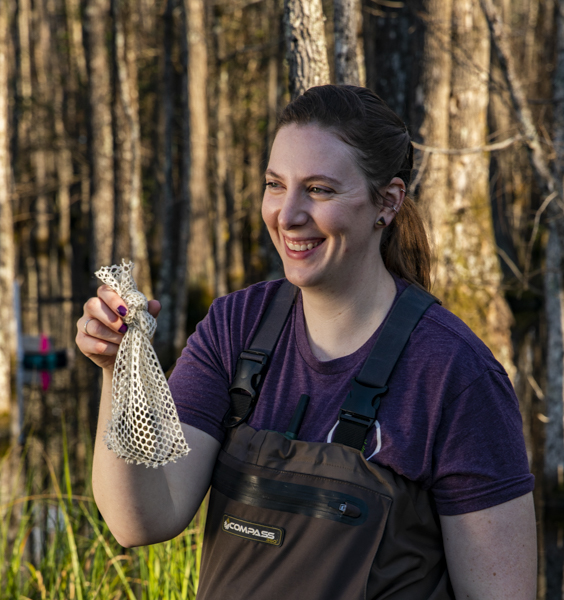
Ph.D. Student, Wildlife Ecology
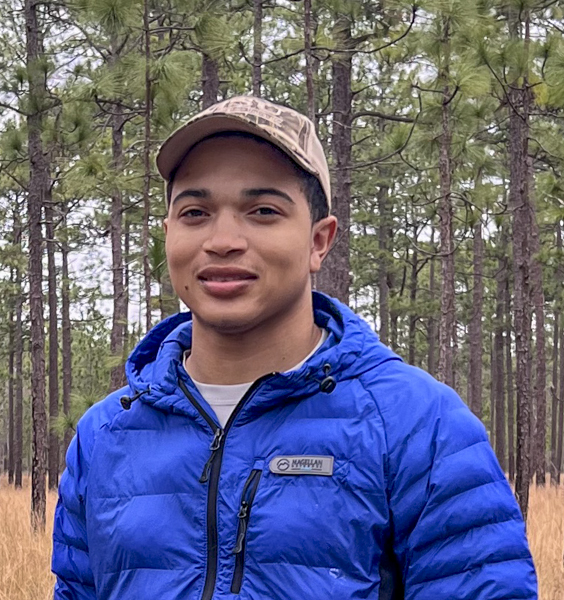
M.S. Student, Ecological Silviculture
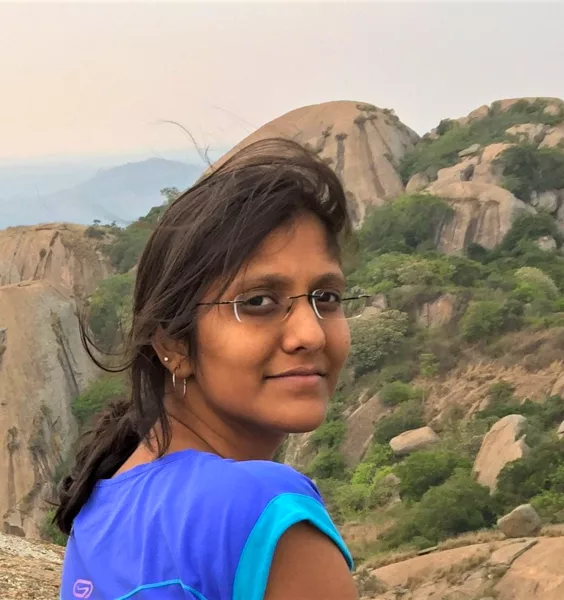
Ph.D. Student, Wildlife Ecology
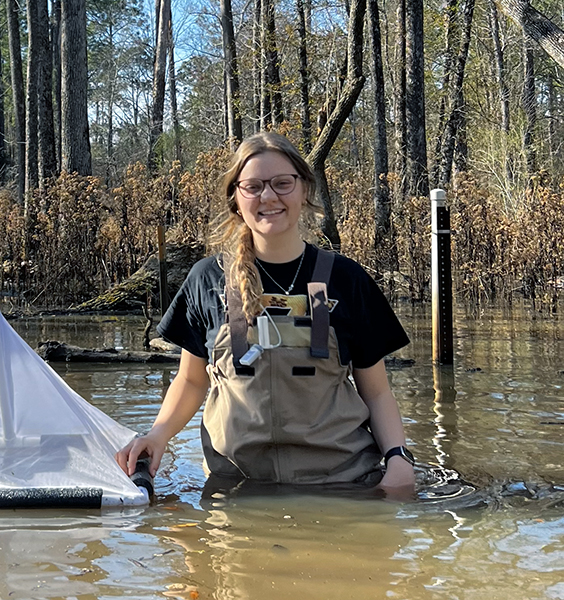
M.S. Student, Entomology and Microbiology
Virginia Tech
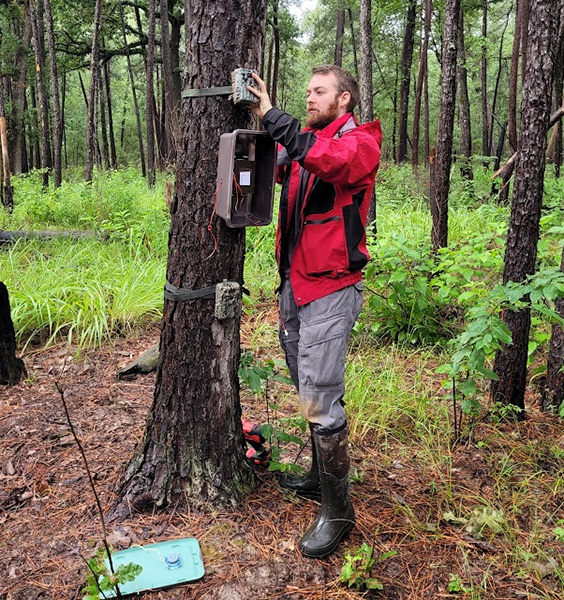
M.S. Student, Wildlife Ecology
Texas A&M University Kingsville

Postdoctoral Research Associate, Landscape Ecology

Affiliate Research Technician, Mussel Conservation

Ph.D. Student, Ecohydrology
Auburn University

Ph.D. Student, Entomology & Microbiology
University of Georgia

Ph.D. Student, Entomology & Microbiology
University of Georgia

Ph.D. Student, Wildlife Ecology

M.S. Student, Ecological Silviculture

Ph.D. Student, Wildlife Ecology

M.S. Student, Entomology and Microbiology
Virginia Tech

M.S. Student, Wildlife Ecology
Texas A&M University Kingsville